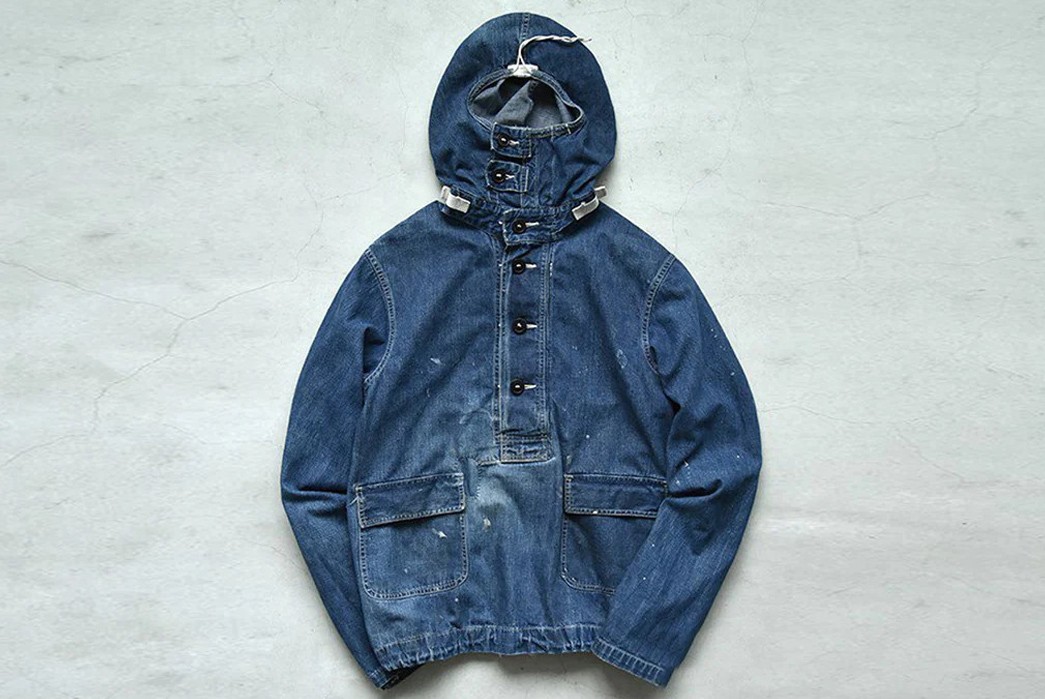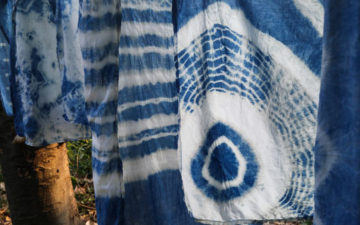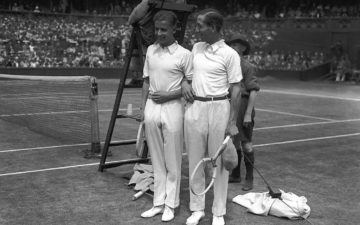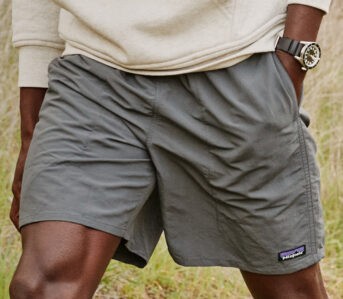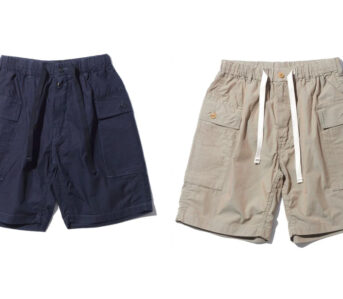As is so often the case, the smock — or anorak — as we know it today, entered popular fashion because of WWII. The loose-fitting pullover garments, often equipped with hoods and large pockets, became standard issue for forces on both sides of the war. The simple design was found useful by paratroopers, boat crews, arctic forces, mountaineers, and even desert expeditions. Each tweaked the basic pattern with amenities suited for their specific activities and environments. After the fighting stopped, the smock’s usefulness, in all its many variations, made an obvious transition into civilian life.
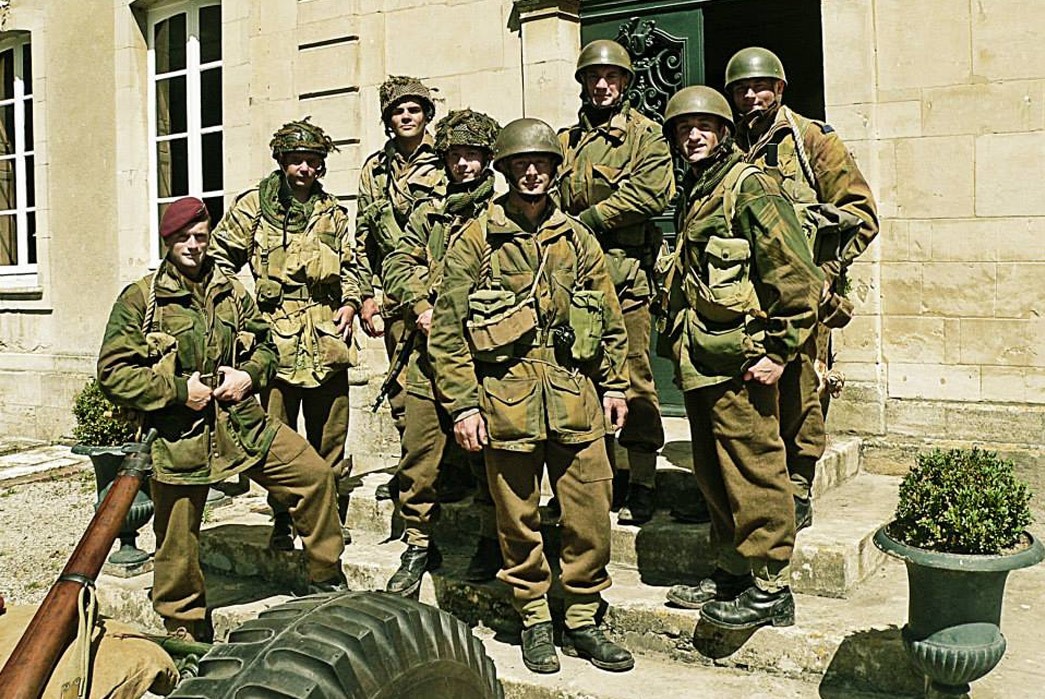
British soldiers wearing Denison smocks during WWII. Image via Battlefront Community.
The smocks that came out of the war achieved a unique combination of ease of use, utility, and protection. As a pull-over garment, they allowed for more efficient coverage of the body. Although many adaptations included zipper, snap, or tied vents to regulate body temperature for varying climates. A hood, often with a high zip neck, was indispensable for cold, wet, and windy environments. While countless pocket arrangements exist, each designed to meet the needs of specific activities, their generally high cargo capacity always came in handy. A baggy, loose-fitting cut allowed for an unencumbered range of motion.
Through the 1950s and 1960s, smocks made their way into niche leisure activities like hiking and camping, boating and fishing, and hunting. By the late 1970s and early 1980s, when the leisure attire of the wealthy became the foundation of popular fashion, anoraks followed right behind polos and rugby shirts. They came in bright nautical coloring or in dark military drabs from retailers like Ralph Lauren and Eddie Bauer. This is where the reputation of smocks and anoraks as part of Gorp-core and preppy culture comes from. While this prevailing interpretation of the incredibly stylish and useful outerwear is not inaccurate, it omits most of a long and fascinating origin story.
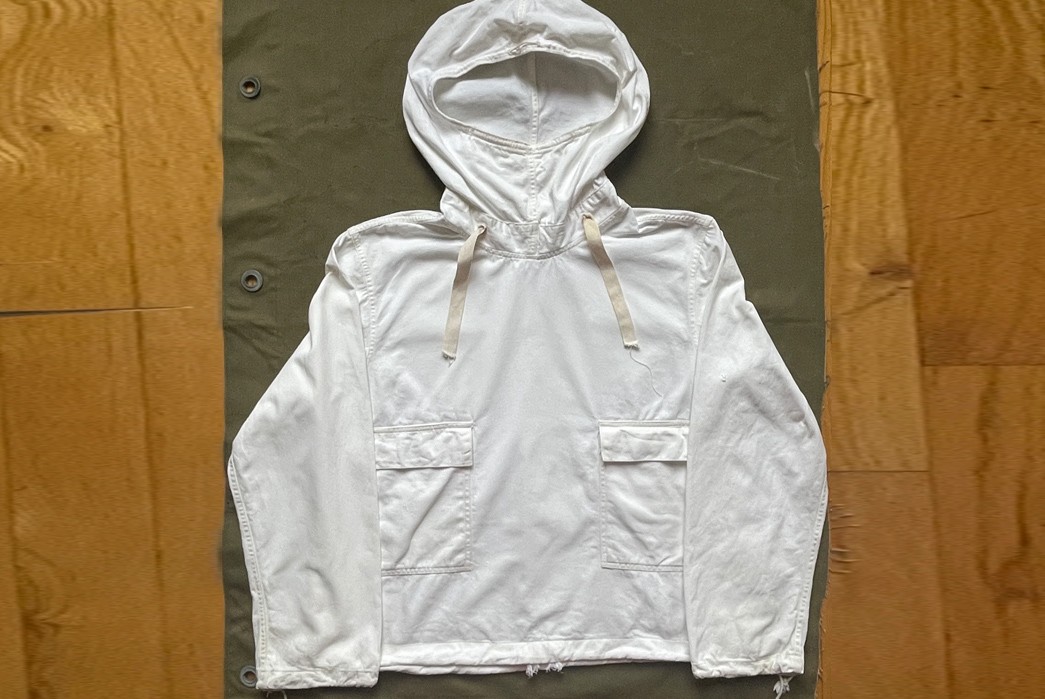
A vintage US Navy gunners smock from WWII. Image via The Major’s Tailor.
When describing the garment in question, both smock and anorak can be used interchangeably. Smock is a much broader term so to be specific, an anorak is a type of smock. Anorak is the commonly used term in America while smock has carried over from military tradition in the UK. However, until the twentieth century, anoraks and smocks were two completely different pieces of clothing. Each had its own storied past from disparate regions of the globe before a handful of European explorers and adventurers wove them together into a uniquely useful coat.
Modest Beginnings
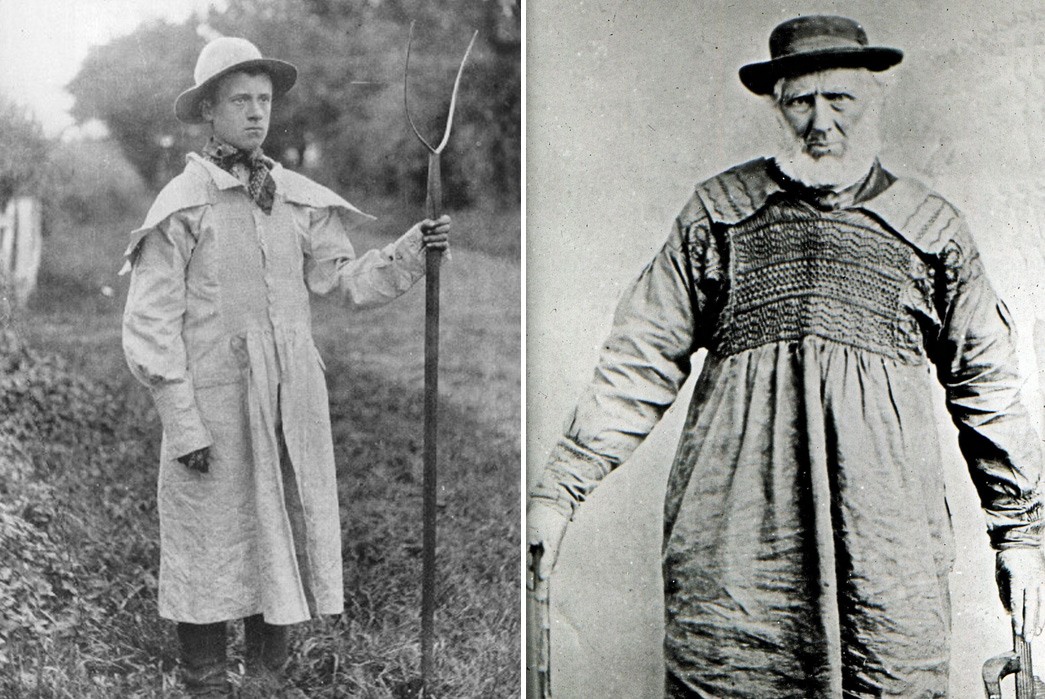
Two photos of 19th-century farmer’s smocks. Images via The Museum of English Rural Life.
Smocks date all the way back to the middle ages. Where the actual word came from is unknown, but records show that the basic design for a loose-fitting, simply constructed, pull-over garment was worn by peasants doing agricultural work. In a sense, it started out as workwear. Anyone who was not rich had little access to pattern-made clothing before the Industrial Revolution. So smocks were cut in a simple box design that anyone could make. Sleeves were attached with an early version of pleating known as smocking which created large folds where the sleeves met the body (it is not known for sure if the name for the embroidery technique came from the garment or vice-versa, it’s a chicken or egg situation). Smocking was used for centuries to give clothing flexibility long before elastic was invented.

Embroidery details of a 16th-century smock. Image via Sarah A. Bendell.
In a world where people owned little clothing and seldom washed what they had, smocks provided a protective layer to keep clothes from getting damaged and soiled. This idea remains the broader meaning of the term smock to this day. Artists and craftsmen wear loose-fitting cover-all shirts when they work to protect their clothing. Even little kids wear old adult button-down shirts backwards in art class, affectionately dubbed “smocks.”
Beginning in the 18th century, European smocks leveled up with ornate embroidery. This was part of the process where smocks were culturally combined with frocks, which were a kind of ornately embroidered shirt. The result was the smock-frock which added decorative detailing to the functional workwear.
Industrialization of the textile industry began in England at the turn of the 19th century and it marked the end of smocks in popular fashion. Mass-produced clothing became affordable to even the lowest-income laborer and agrarians. Loose-fitting, over-the-head garments became relegated to children’s clothing during the Victorian age. This marked what appeared to be the end of smock at the time, but a few European adventurers would soon encounter indigenous Arctic attire that would start a new chapter in the story.
Journey North
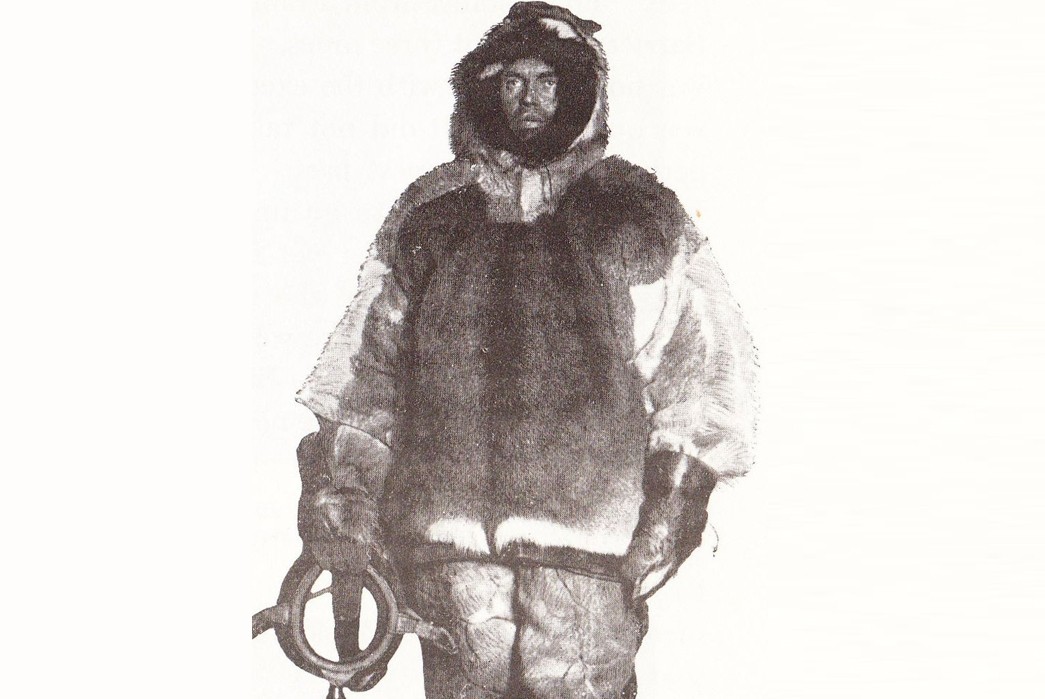
Roald Amundsen in his fur anorak. Image via Carbourn.
Inuit and other indigenous peoples of the Arctic made hooded pull-over coats from caribou, wolf, and seal skin generations before Europeans made smocks. It wasn’t until the beginning of the 20th century that Europeans learned about the perfect cold-weather attire. In 1903, Norwegian explorer Roald Amundsen contracted the assistance of Inuit tribes during his journey through Canada’s Northwest Passage. Inuit assistance was crucial in Amundsen’s survival, much less his success. Along with navigation techniques and the use of sled dogs, Amundsen adopted the native clothing.
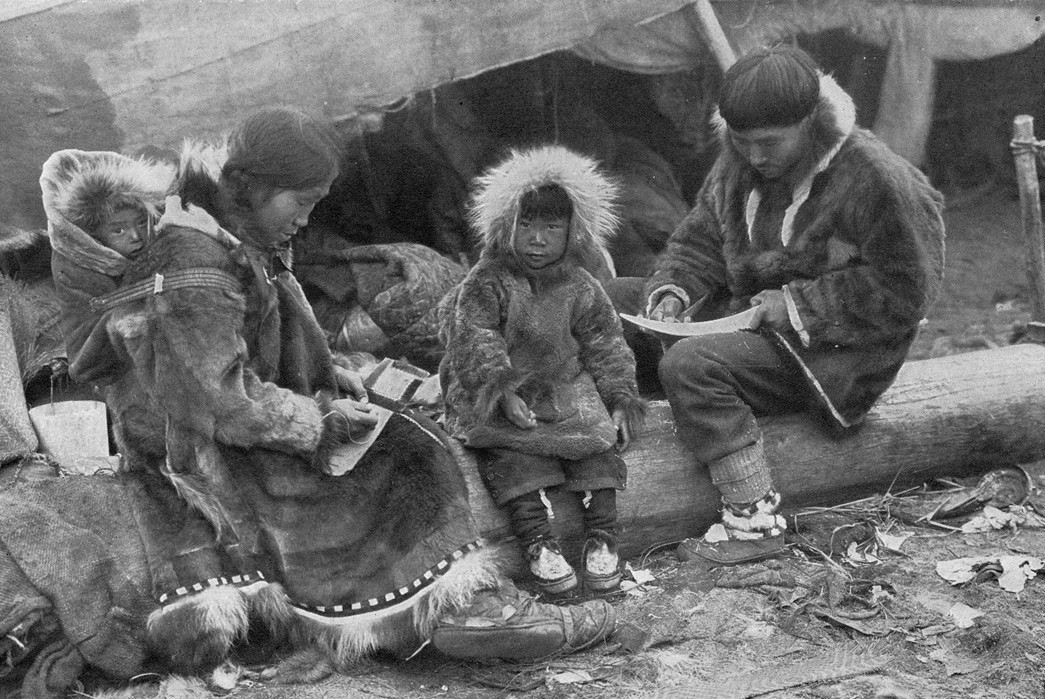
An Inuit family wearing traditional caribou anoraks. Image via Wikipedia.
Native Greenland tribes called their loose-fitting hide coats “Anoraqs.” Using furs of animals adapted to Arctic conditions provided ample insulation. The pull-over design, which went down to the thighs or even the ankles, cut down on openings to further lock in body heat. A large hood could be pulled up to fully seal off the tundra environment. This design was so effective that Amundsen brought it home with him to inspire European fabric makers. Soon, lighter weight and weather-resistant, mass-produced fabrics like gabardine were used to make anoraks that resembled old European smocks. With their paths crossed in Britain by way of the Arctic tundra, anoraks and smocks would remain intertwined in name and design to this day.
For their 1911 expedition to the South Pole, Amundsen and his team wore a combination of Inuit-style fur and Burberry-produced gabardine for added wind and moisture resistance. It is worth noting that modern parkas evolved from that same set of Inuit-inspired clothing worn to the South Pole. In fact, parka is an Inuit word that means “skins.” The only fundamental difference between a modern anorak and a parka is the zipper closure. They’re two sides of the same sartorial coin.
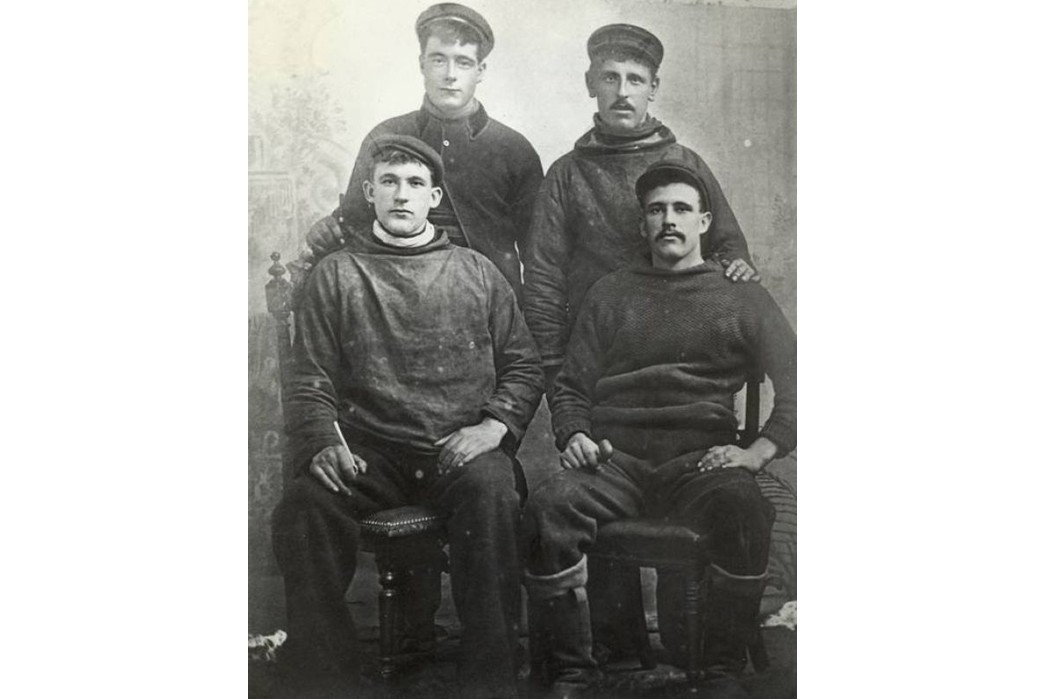
Early twentieth-century fishermen in nautical smocks, bottom-left and top-right. Image via Eastern Daily Press.
Heavy-duty weather-repellent smocks became the go-to outerwear for the planet’s toughest environments after Amundsen’s success at both ends of the world. However, their use remained limited to niche ventures like fishing, mountaineers, and cold weather exploration during the 1920s and early 1930s. It was around this same time that an industrial method for producing waxed canvas sailcloth using petroleum-based paraffin wax made the material more affordable. Longshoremen throughout the British Isles replaced their traditional woven wool smocks with waxed canvas versions.
Take to the Skies
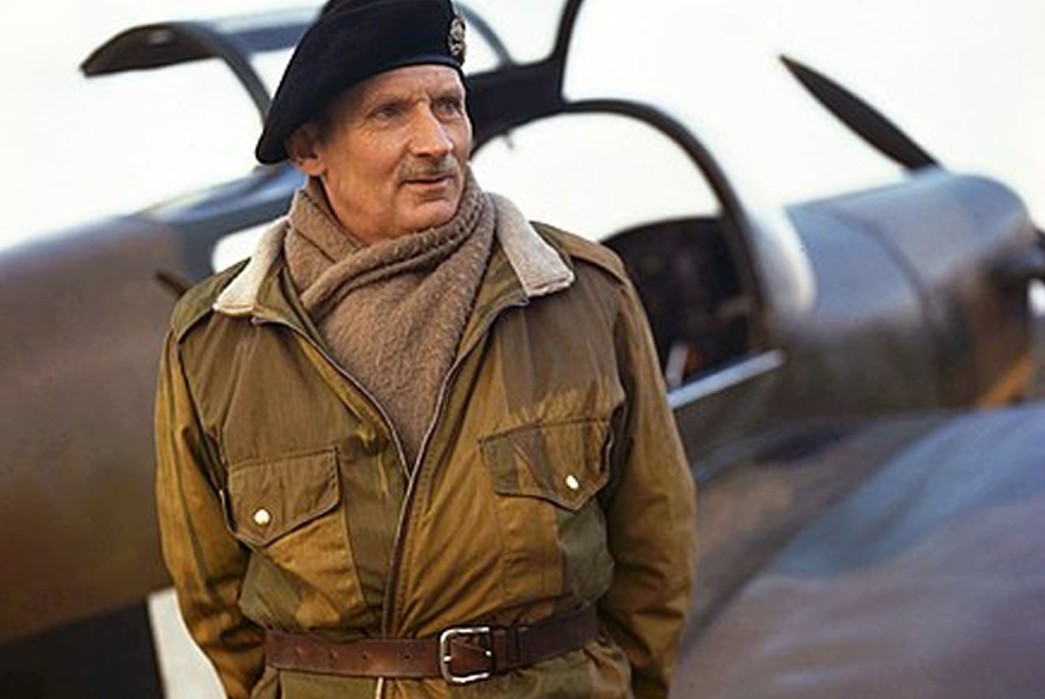
British Field Marshal Montgomery wearing the original pattern Denison Smock. Image via Wikipedia.
Nothing spurs innovation like war. As Germany geared up their war machine in the 1930s, it created an adaptation of the smock to outfit a brand new style of aerial soldier. Descending upon their enemies from the sky like an assault from the heavens, these men jumped out of planes with parachutes. A special garment was required to go over the paratrooper’s uniform, preventing snags on the plane and protecting them from the cold and wind of falling from high altitudes.
As the Blitzkrieg rolled through continental Europe in 1939 and 1940, the British took notice of the tactics and equipment used by the Germans to allow such mechanized efficiency. When Prime Minister Winston Churchill created Britain’s Airborne Forces in June 1940, the goal was to bring the island nation’s woefully outmatched armed forces up to snuff. Color Sergeant Tombstone summed up the situation perfectly in his History of the Denison Smock,
“Because the British were starting from the ground up, early Airborne equipment was often based on German designs. The first British paratroopers wore a cotton gabardine garment officially termed “Jacket, Parachutist’s”, which was often called a “jump jacket” or sometimes a “step-in smock”. It had full sleeves but only short legs, and a 3/4 length zip closure.”
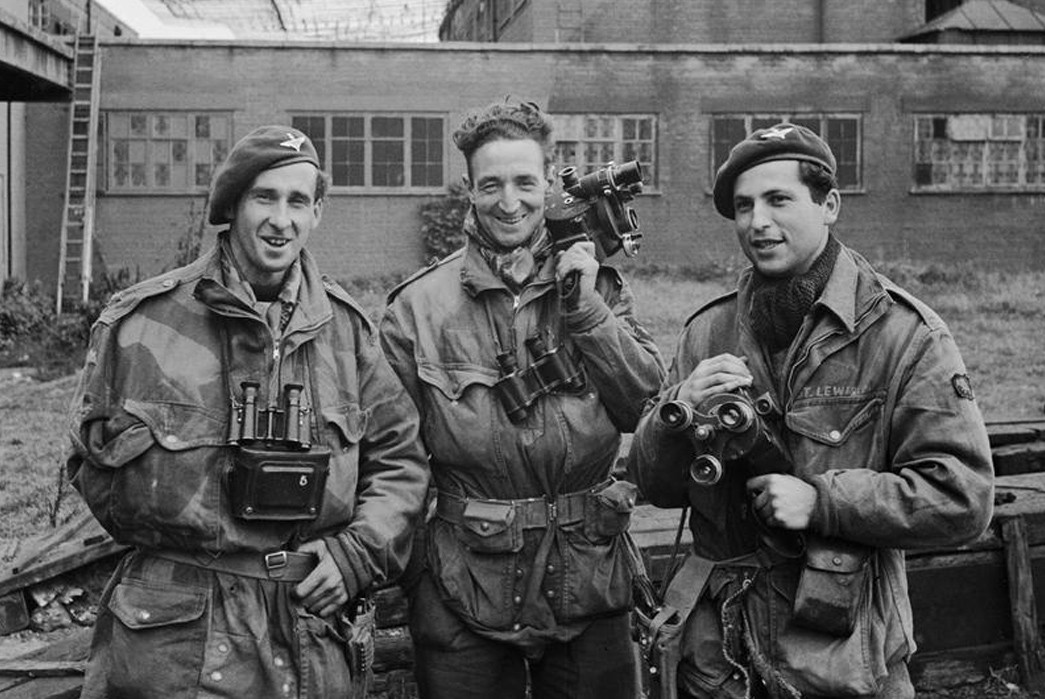
Three British soldiers in Brenton Smocks, June 1944. Image via Imperial War Museum.
The brass at Airborne Forces quickly decided that their German knock-off simply wasn’t good enough. In 1941, they got to work designing their own airborne protective cover-all. Drawing inspiration from explorers’ anoraks and fisherman’s smocks, the Denison Smock was born. True to the smock design, it was a large baggy cut that could easily fit over a full battle uniform. A half zip closure was added to ease the putting on and taking off process. Four large pockets on the front had brass snap flaps to secure items on the move and during jumps. A “Beaver Tail” flap hung from the back that could snap to the front, preventing the jacket from riding up during jumps. This feature led local Arabs in North Africa to dub British soldiers the “Men with Tails.”
The Smock at War
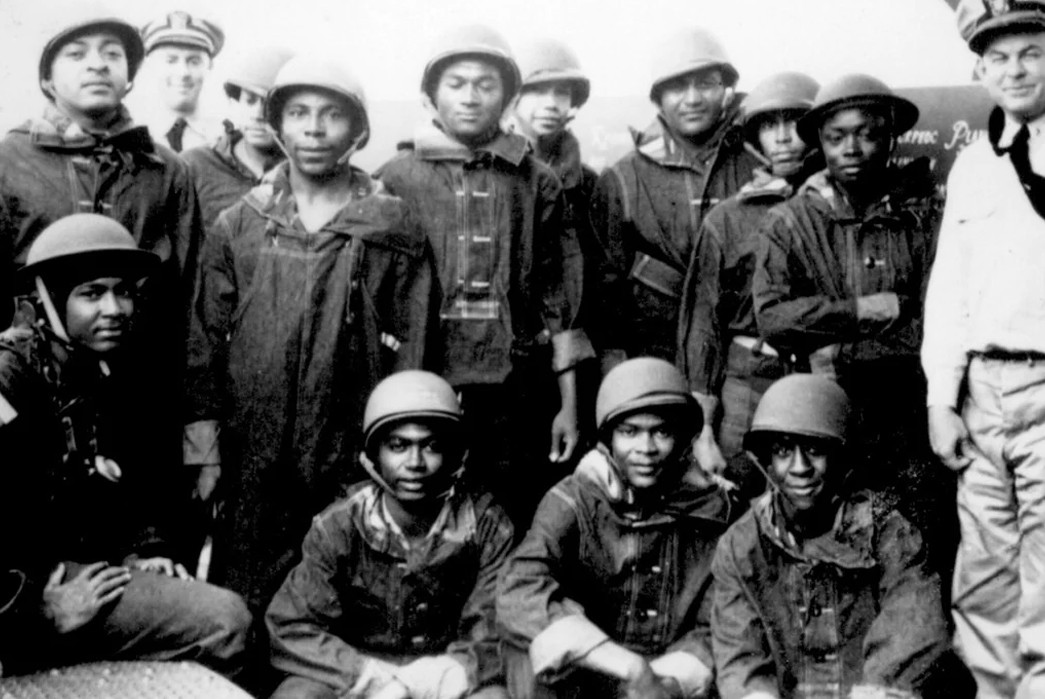
African American sailors wearing US Navy deck smocks during WWII. Image via Blacksmith.
From this initial design, the military smock went on to become an indispensable piece of kit in several drastically different theaters of the war. As combat spread into new areas that required exceptional levels of protection from the elements, new smocks were adapted to meet those needs. When the British sent forces to aid the Norwegians from a German invasion in 1943, they were met with the realization that their cold weather equipment was insufficient. The Norwegians wore heavy anoraks inspired by Amundsen’s design. British commanders ordered smocks inspired by the same design, further cementing the relationship between the two garments.
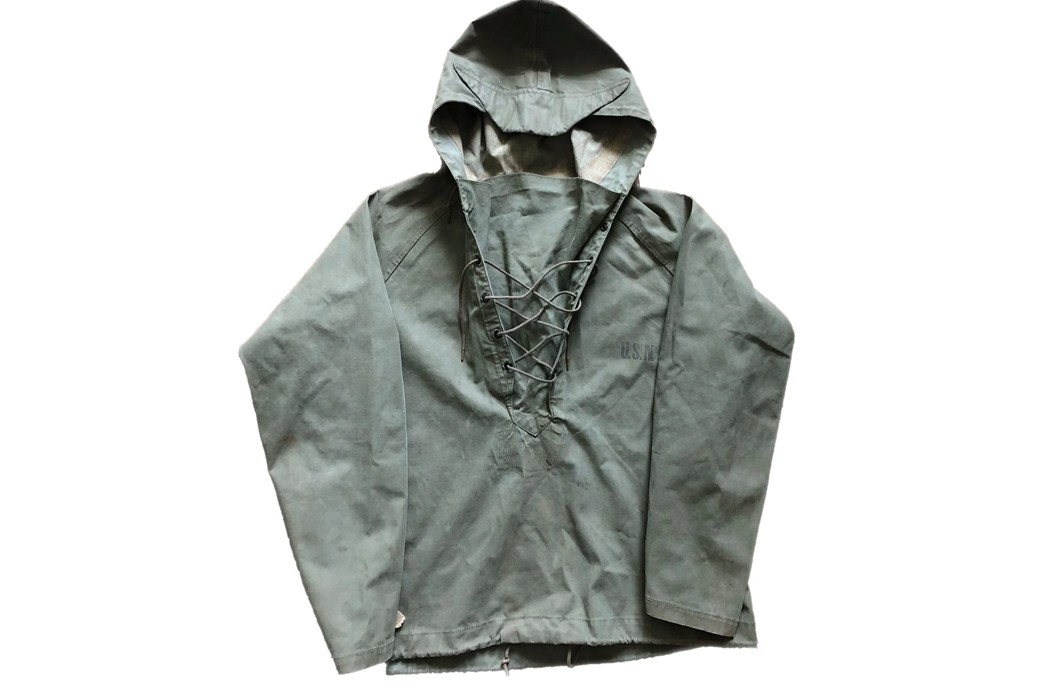
US Navy deck smock from WWII. Image via Salty Dog Vintage.
American and Canadian forces developed their own uniform smocks during WWII. Canadian paratroopers wore a lightweight cotton pull-over that was essentially a trimmed-down version of the Denison Smock. The US Navy had a deck smock made from denim or olive drab canvas. It was much shorter than its English airborne counterpart, sitting at the waist, and featured a hood with a drawstring closure. All white gunner smocks worn by the US Navy in the Pacific were expedited to Europe during the winter of 1944 and came in handy during the Battle of the Bulge.
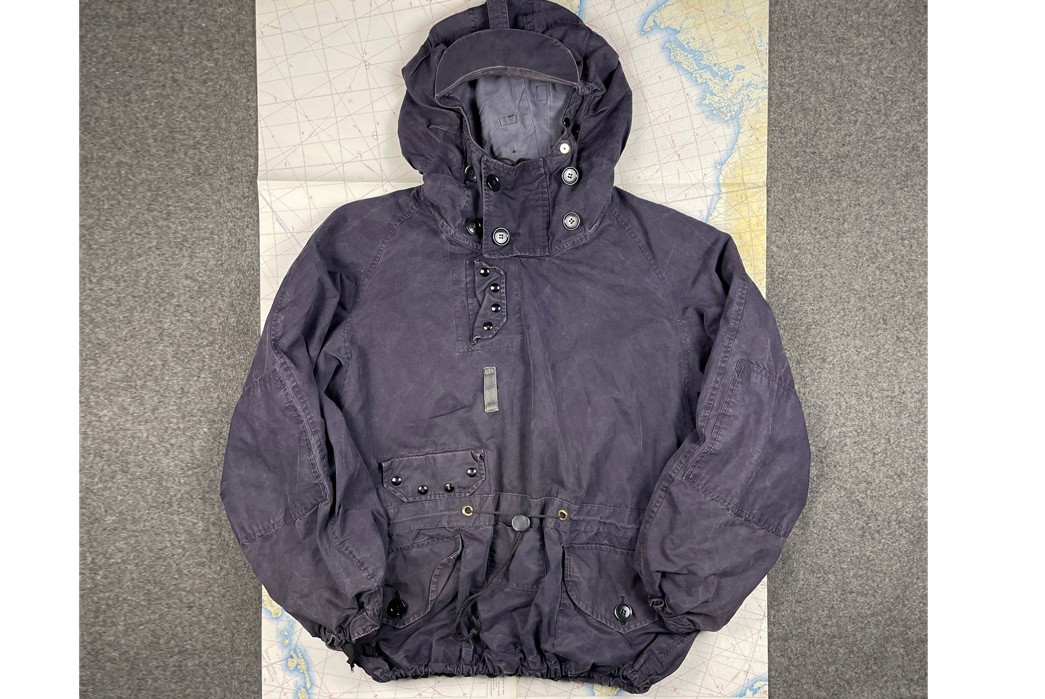
Royal Navy deck smock from the 1950s produced by Belstaff. Image via The Major’s Tailor.
The Royal Navy took to the smock after the war. Their version was built around water and windproofing. Taking cues from the Denison, large flap closure pockets were added, however, the body was cropped like the American style. Rather than a drawstring, the high neck closed with buttons. A drawstring was added to the mid-torso to keep the body wind-tight. Early versions worn in the 1950s through the 1970s were made of Ventile and produced by Belstaff.
Honorable Discharge
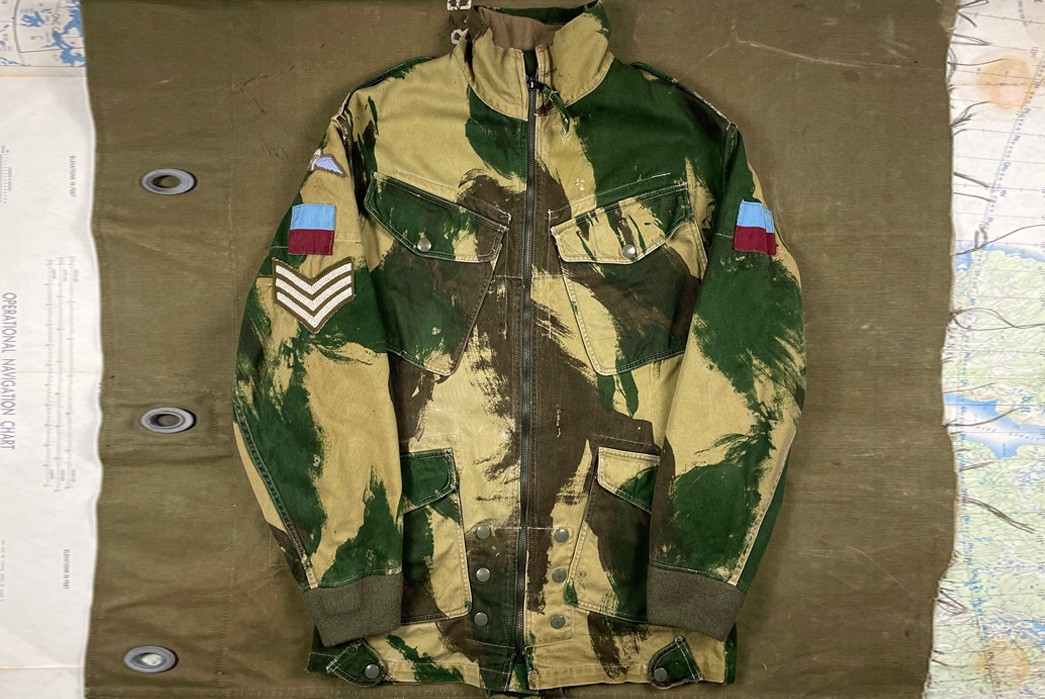
A Denison Smock customized with a full-length zipper. Image via The Major’s Tailor.
Military surplus flooded the civilian market after WWII and had a significant influence on designs created by clothing manufacturers. Officers started customizing their Denison smocks during the war with full-length zippers. Soldiers who took their Denisons home — as well as civilians who got their hands on any extras — copied this full-length zipper alteration for easier use. Just as the jackets worn by American bomber pilots inspired the American motorcycle jacket, full-zip Denison smocks were the inspiration for British-style moto jackets.
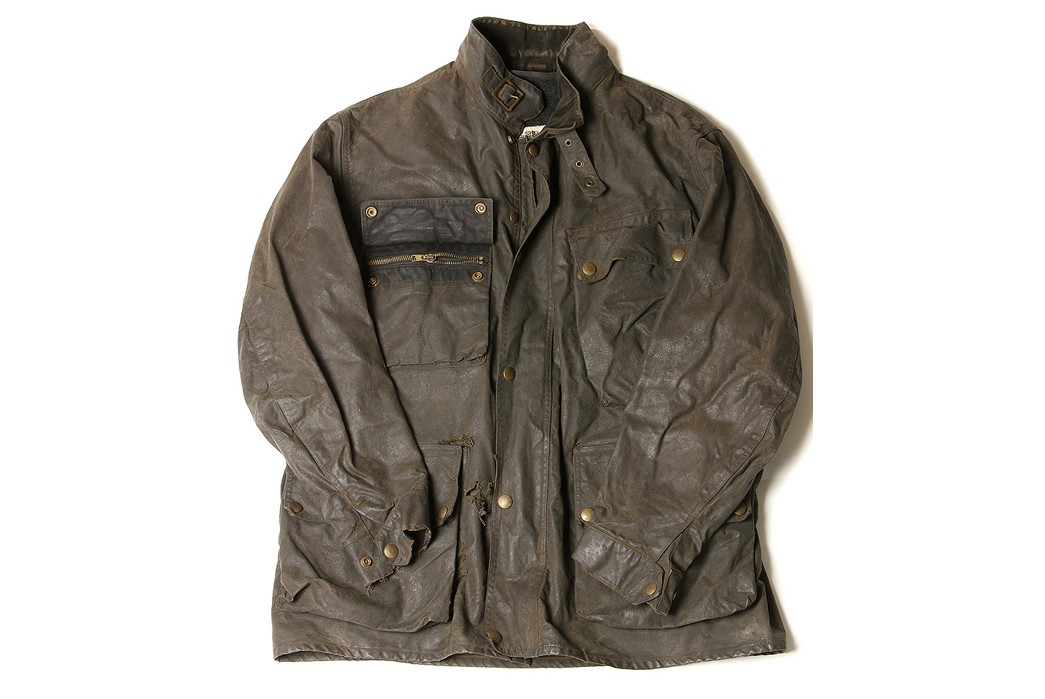
A Bellstaff Trailmaster jacket from the 1950s. Image via Modicum.
The nautical smocks worn by the American and British navies became popular for fishermen, longshoremen, and leisure boaters in America and the UK through the 1950s and 1960s. Bright color blocking and stripes fit right in with the leisure fashion of those eras. They made their way inland as their weatherproofing also proved useful for outdoor activities like hiking and fishing. It was at this point that the words anorak and smock became interchangeable to describe the same category of outerwear.
Anoraks became a part of the proto-preppy wardrobe as they were adopted by affluent young Americans in everyday attire. Brands like LL Bean and J.Crew helped make Anoraks fashionable to the masses in the 1970s and 1980s. They paired well with chinos and boat shoes as a lightweight jacket for the spring and fall. As it turns out, the style appeal of smocks and anoraks far exceeded any utilitarian use. While some people still buy them to venture into hazardous weather, most just like the way they look.
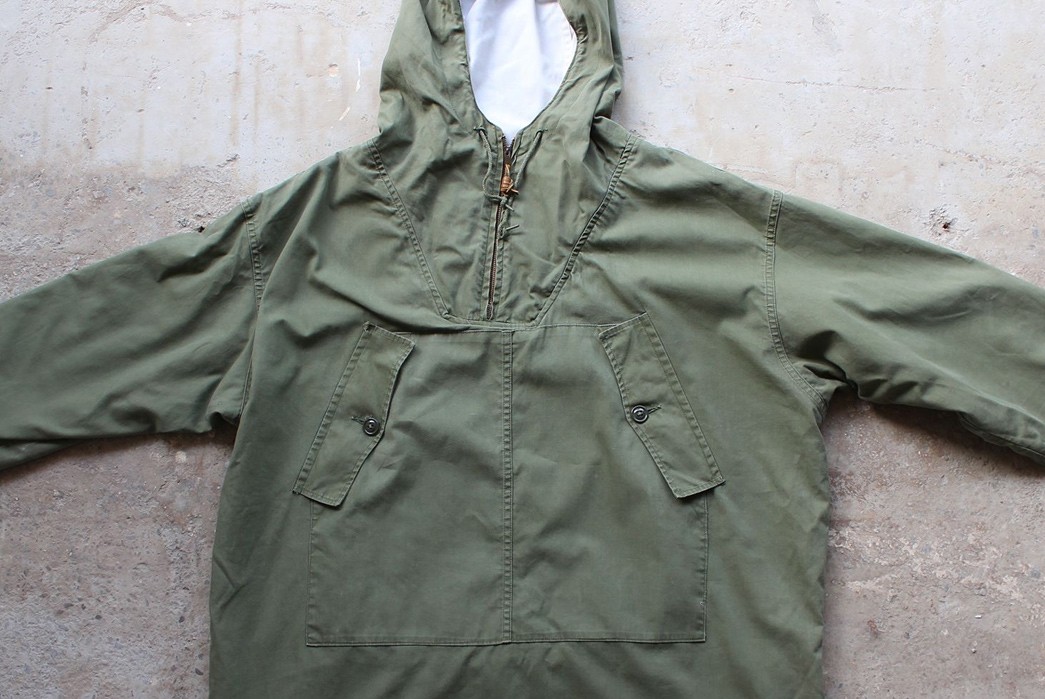
LL Bean’s Labrador Anorak from the 1960s, inspired by military surplus. Image via Pinterest.
Smocks in Contemporary Fashion
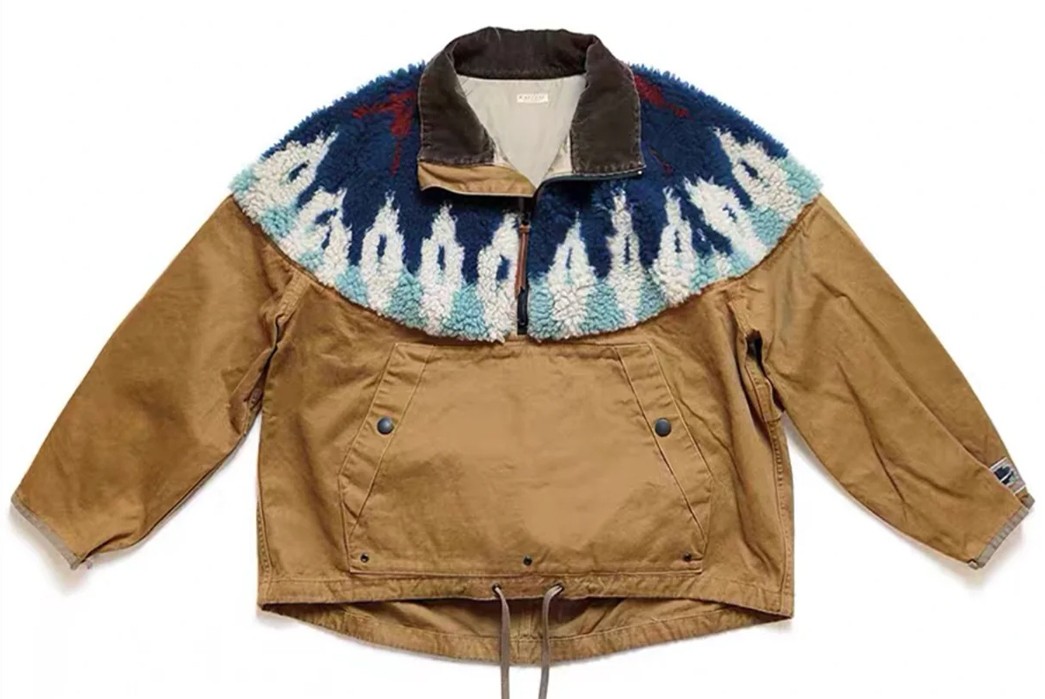
A modern anorak from Kapital. Image via Radpresent.
Strictly speaking, a wide range of smock-inspired shirts and coats exist today. Anoraks are the most well-known and have the most prominent place in fashion. They range from heavily insulated jackets akin to parkas, to lightweight windbreakers designed for hiking and light rain. Other smock variations exist that are closer descendants of the 18th-century peasant garments. They’re typically loose-fitting knitwear, often made from cotton or linen, that are either aesthetically pleasing or provide utilitarian protection for artists.
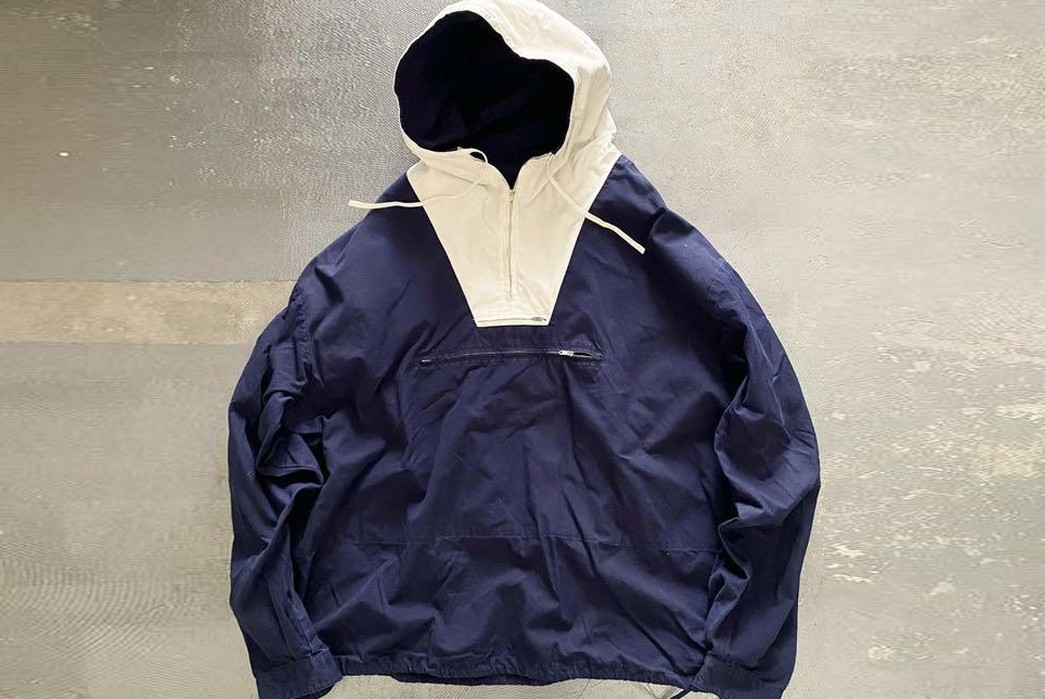
A J.Crew Anorak from the 1990s. Image via Souvenir Culture.
Anoraks have appeared among many fashion cliques over the past few decades. Neo-mods wore military surplus style anoraks along with fishtail parkas and trench coats in the 1990s. #Menswear enthusiasts with a penchant for vintage workwear and mid-century military gear wore coats inspired by the Denison Smock. Gorp-core made streetwear out of anoraks designed for outdoor adventuring from brands like Patagonia and The North Face in the 2010s. At the same time, the preppy resurgence brought back nautical style anoraks, most notably from J.Crew.
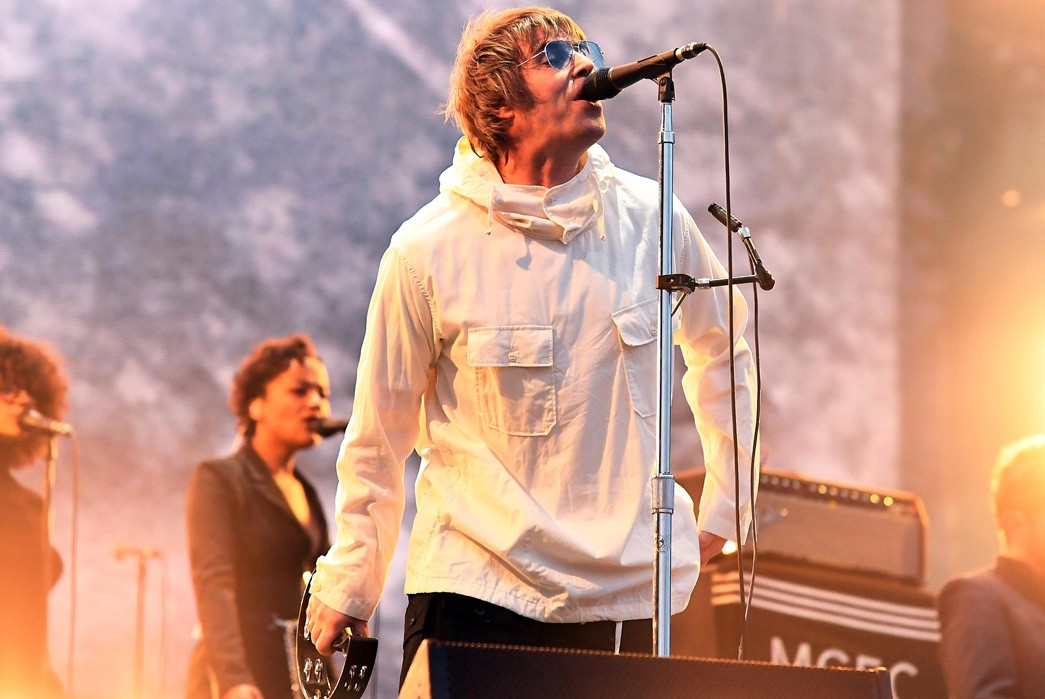
Liam Gallagher wearing an anorak on stage inspired by WWII gunner smocks. Image via The Times.
If there is a patron saint of modern smock style, it has to be noted parka enthusiast and former rock god Liam Gallagher. No celebrity has dedicated a bigger portion of their wardrobe to smocks. They have been his primary stage attire for most of his illustrious career and it appears that the older he gets, the less often he is seen in public wearing anything other than smocks and parkas. Remarkably, the look has never failed him. No matter how many times the little brother of Oasis wears a smock indoors, it always looks cool.
With such a long and storied history, it is no wonder that smocks are now available in a vast range of fabrics and designs. When shopping for a smock or anorak, it is best to honor that history and stick to designs that honor the early military versions. Below, we’ve lined up some of the best options available right now.
Shop Smocks and Anoraks
Soundman Raphael II Jacket
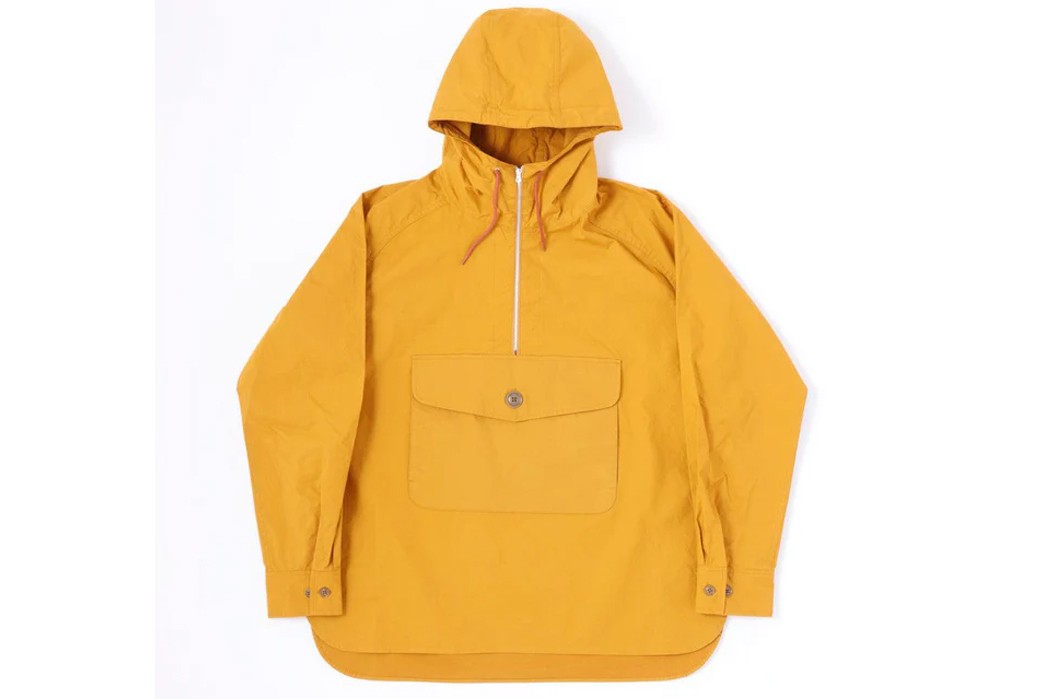
Available for $345 ($310.50 for Heddels+ members) from Clutch Cafe.
The Real McCoy’s MJ21022 USN Salvage Smock Parka (Over-Dyed) Yellow
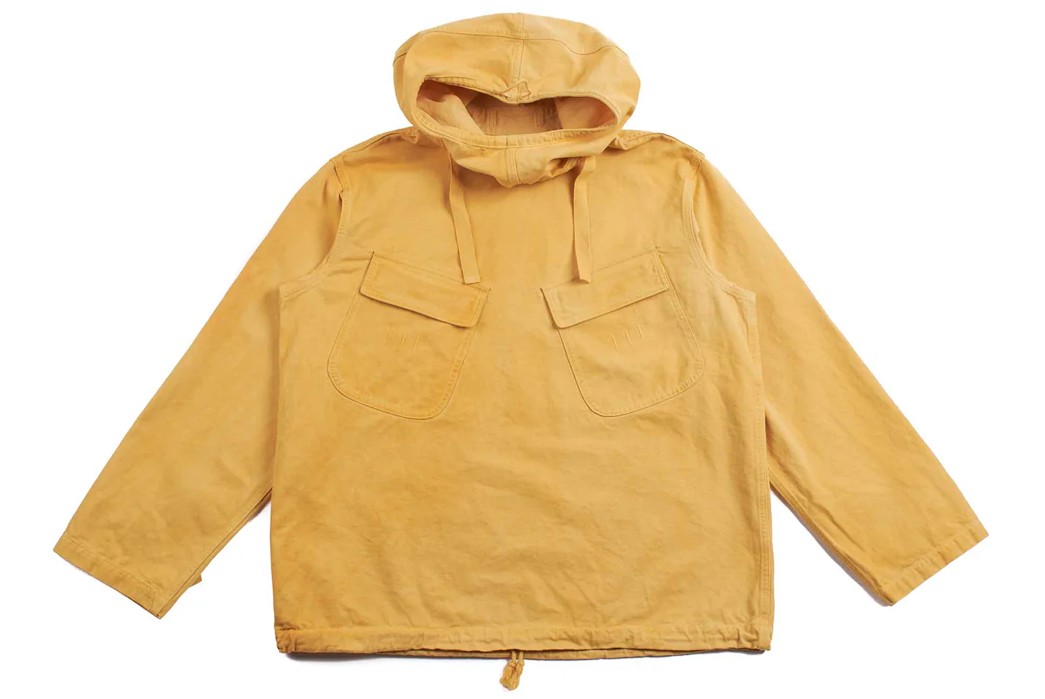
Available for $475 from Lost & Found.
J. Crew Heritage Hooded Three-Layer Anorak
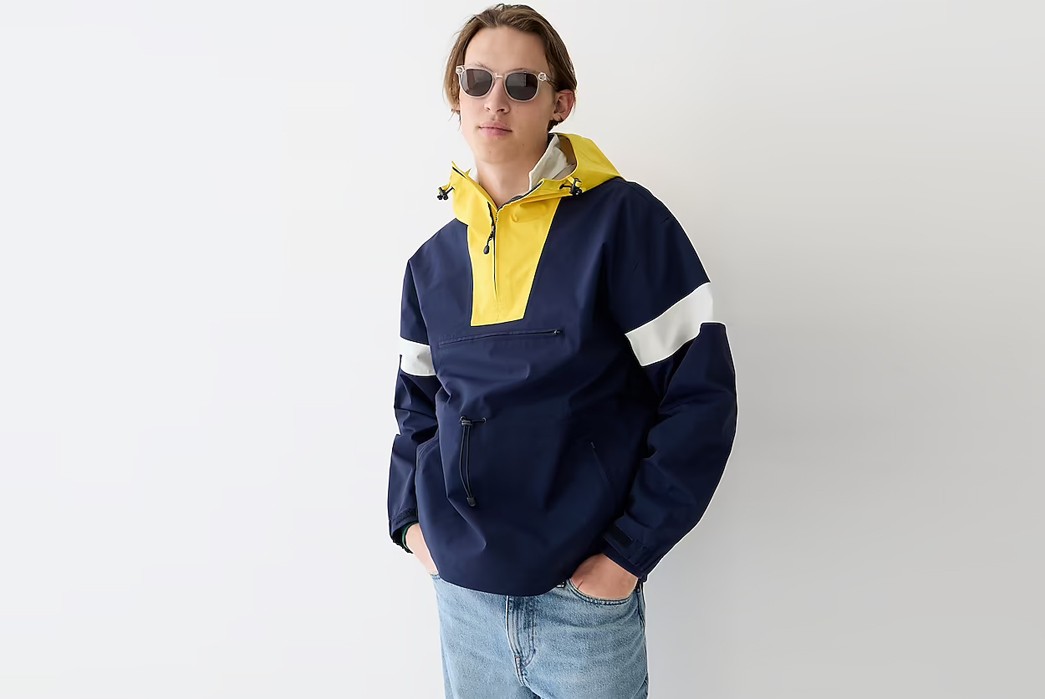
Available for $224.99 from J. Crew.
Nigel Cabourn Mountain Smock
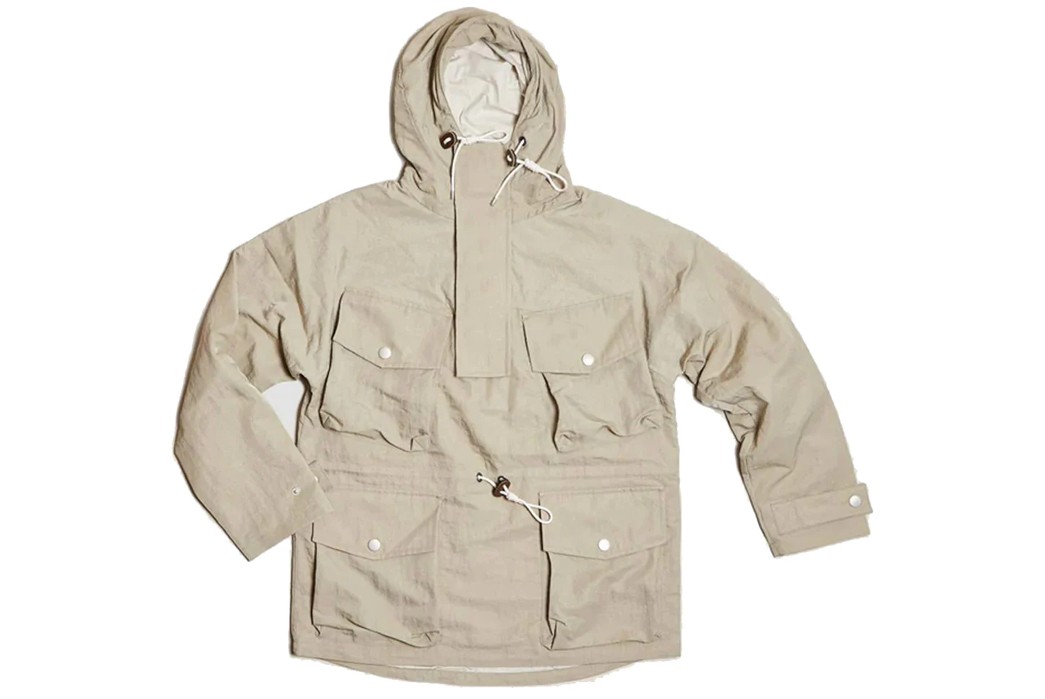
Available for $396 from Hatchet Outdoor Supply Co.
Bryceland’s Foul Weather Anorak
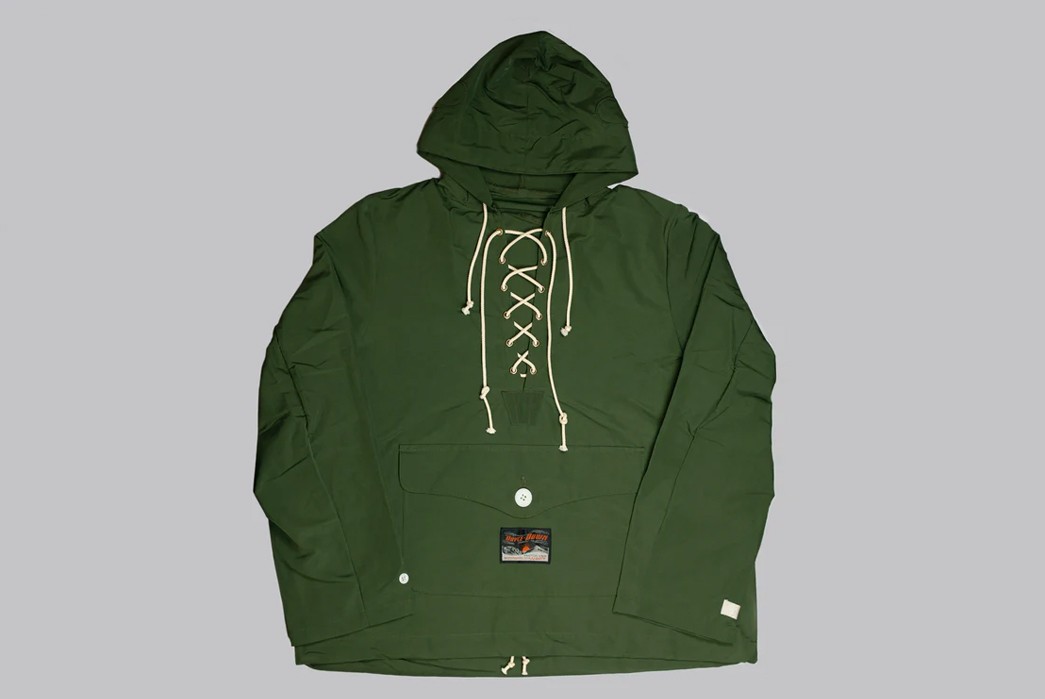
Available for $380 from Bryceland’s.

